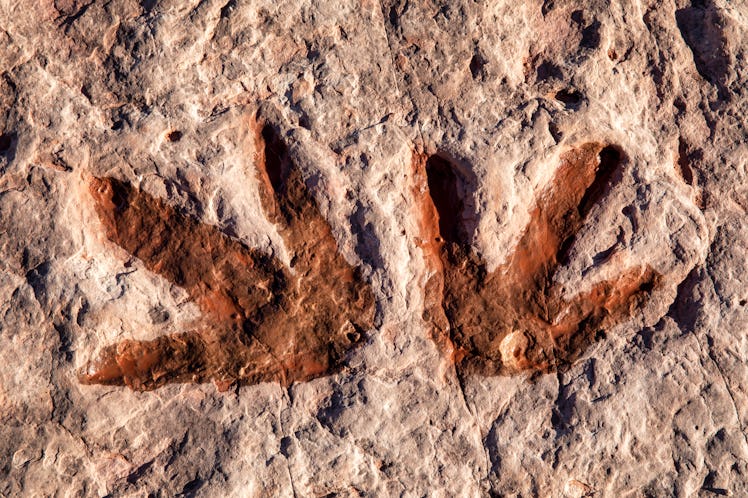Over 1,000 Ancient Dinosaur Tracks Were Just Found In A Small Chilean Town
"It is something truly unprecedented in my professional experience, incredible.”

The time of dinosaurs might be long gone, but we’re discovering more evidence of their existence all the time. For example, a recent — and major — discovery came from a tiny Chilean town where a group of paleontologists found 1,100 dinosaur tracks, all within ten days. Which is obviously incredibly awesome. Just as awesome: There's probably a lot more left to discover at the site.
ADN Radio Chile reported that these new dinosaur findings were discovered in the small town of Huatacondo, which has the highest concentration of dinosaur footprints in Chile. Fossilized footprints are different than bones, Newsweek explains, because they can reveal information about the animals’ behavior that fossilized bones cannot. Footprints help scientists learn more about the dinosaur's habits based on where the prints are found and the area's conditions.
Once the Huatacondo community discovered the footprints, paleontologists were called in from the Geology School of the Universidad Mayor in Santiago. The research team, led by Christian Salazar, was on site between May 23 and June 3, where they made some amazing discoveries.
The paleontologist research team discovered over 1,000 footprints from dinosaurs in various sizes, including newborn, juvenile, and adult prints. There were two types of prints: ones that walked on four legs and others that walked on two legs. The size of the footprints varied between 30 to 40 inches long, which the researchers' best guess puts the dinosaurs at around 40 feet long.
The prints were found in an area spanning 11.5 square miles, and some of the footprints were dated to be at least 150 million years old.
"It is something truly unprecedented in my professional experience, incredible. In 10 days, we found more than a thousand footprints...We know that there is huge potential here and it is the beginning of a great project," Salazar told China's Xinhua news agency, per Newsweek.
"It gives us the opportunity to make climate interpretations...determine seasonality because here we have very well marked cycles," Salazar continued. "We have to continue collecting information, collecting data, complementing what we already collected."
The findings — and the photographs of the prints — have yet to be published in a peer-reviewed journal. (The photo above is not an actual print from the site.) Still, the researchers are excited about what these new findings will unlock about the past, climate change, and the future, and we’re excited to see what the prints look like.